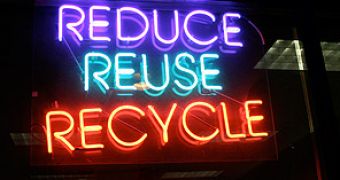The Coats for Cubs program reveals a marvelous idea which helps non-profit organizations reestablish the fragile balance of the wildlife ecosystems. The individuals who feel sorry for the fact that the company behind their expensive fur coat killed one or more wild creatures in the process are encouraged to repent.
The organization will try to convince people to trade their fur apparel, including trims, accessories and shearling at any Buffalo Exchange, starting November 25th.
The donated goods would turn into bedding material which will increase the level of comfort for the injured or orphaned animals.
The Coats for Cubs initiative has proved its utility, since 2006 when its has been announced for the first time. In only 5 years, Buffalo Exchange managed to collect 6,331 used furs from the people who decided to embrace the green values while fighting animal cruelty.
The Buffalo Exchange initiative is unique, due to the fact that it rewards the participants, while not letting them leave empty-handed after they decided to abandon their fur apparel.
They have the change to trade their used fur coat for a brand new item, and the selection is quite generous, including designer labels and one-of-a-kind, vintage products.
The company engaged its efforts in recycling campaigns, throughout time. It managed to support local non-profit organization, by investing approximately $399,000, a significant amount of money which was the result of its successful Tokens for Bags strategy, developed since 1994.
At this point in time, the enterprise can brag about saving 8 million bags. Their eco-conscious conduct has paid off, since the earth-friendly family-owned business has a network of 41 open stores and 2 franchises in 15 states while their profit margins reach $64.4 million in sales every year.
The Coats for Cubs strategy reveals that a golden heart shouldn't be covered by a natural fur coat. Despite its achieved goals, in order to prove its success on a large scale, its initiators should think of effective measures which will convince the public not only to donate their used goods, but also to stop investing in such luxurious, yet blood-dipped products.

 14 DAY TRIAL //
14 DAY TRIAL //